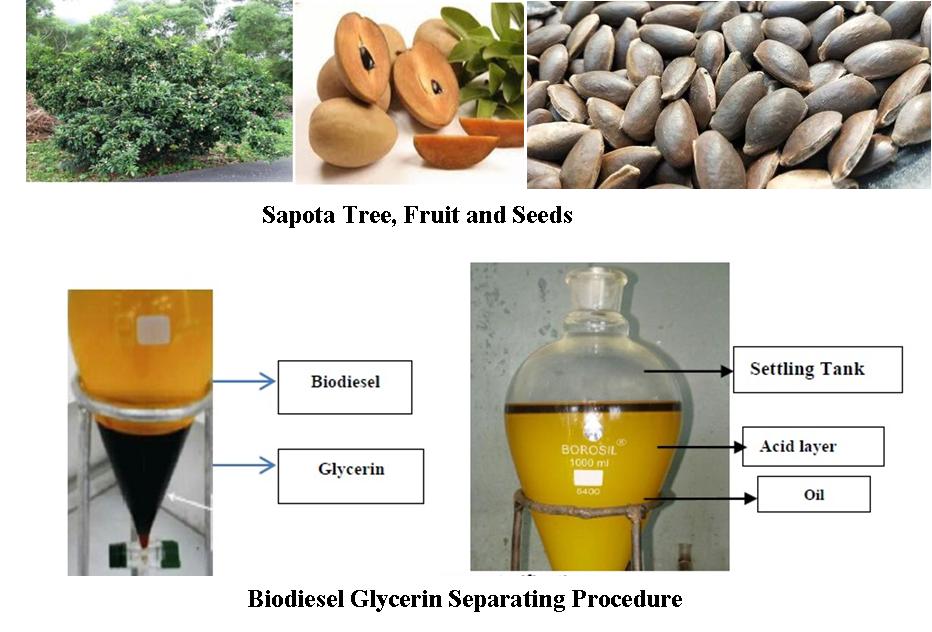
Biodiesel can be derived from the oils of fruit seeds for powering diesel engines, and this study focuses on extracting biodiesel from Manilkara Zapota seeds, which are readily available and not intended for human consumption. The primary aim is to underscore the use of non-edible oils as a cost-effective raw material for biodiesel production. The research indicates a successful production yield of 92.45% using a 0.76% catalyst, an excess of 6 methanol equivalents in comparison to the oil, a temperature of 62°C, and a reaction time of 90 minutes. The biodiesel obtained from Manilkara Zapota seed oil predominantly comprises methyl esters of oleic, stearic, and palmitic acids, presenting a viable alternative to fossil diesel for unmodified diesel engines. Optimal performance variables for maximum conversion efficiency were determined as a 40°C reaction temperature, 6:1 alcohol-to-oil ratio, 120 minutes of experimental duration, and a 0.5wt.% NaOH catalyst. Among these variables, the alcohol-to-oil ratio was identified as the most influential, contributing 84.34% to the overall performance. The thermal profile of Manilkara Zapota Seeds biomass exhibited multistage decomposition behavior. The synthesized Manilkara Zapota Methyl Ester (MZME) derived from seed oil, using the optimized performance variables, complies with the ASME D 6751 and EN14214 Biodiesel Standards.
Total file downloads: 10